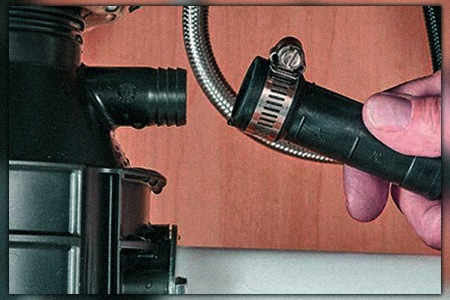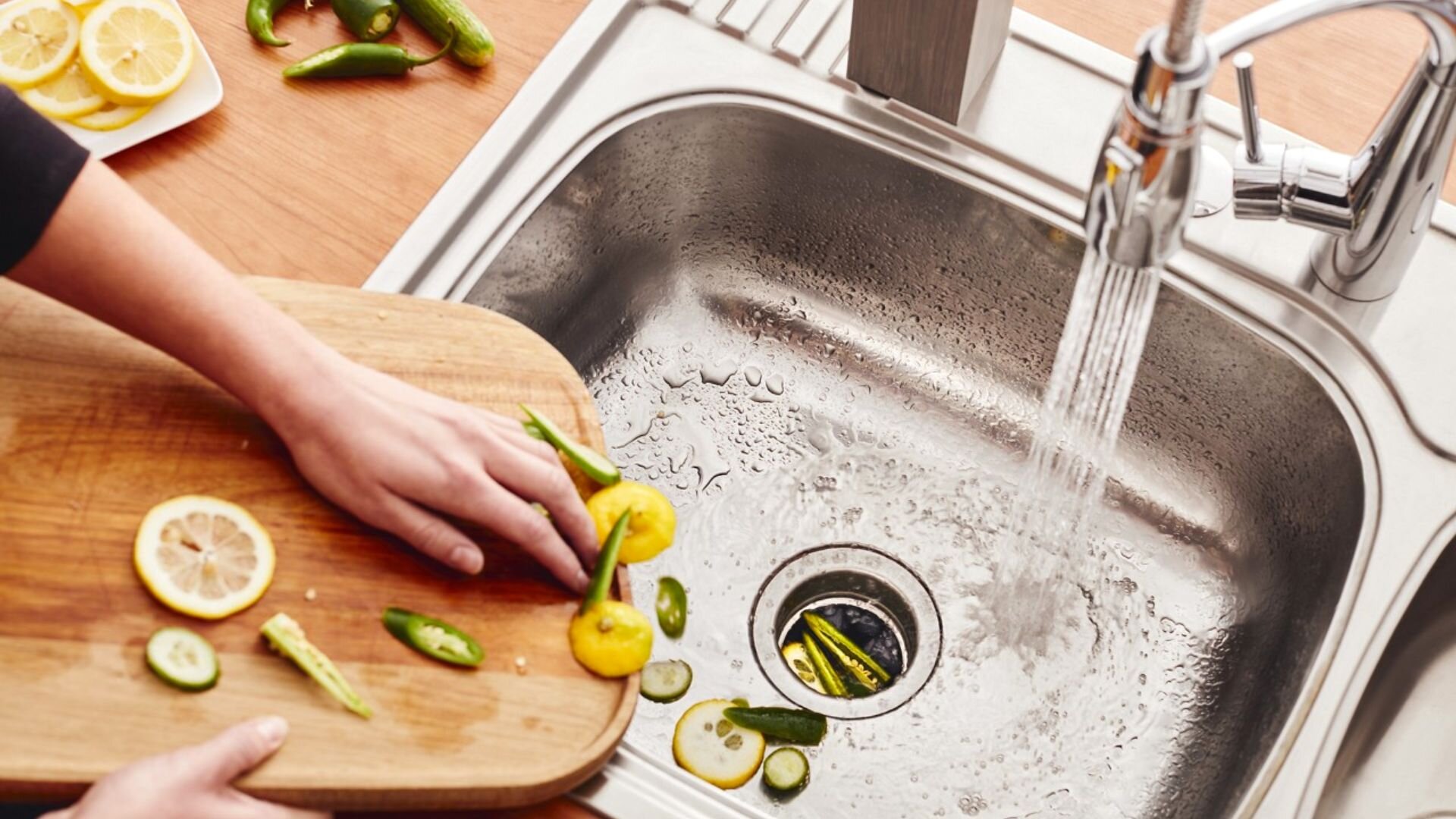This article listed below pertaining to Garbage Disposal Leaking From Bottom is exceedingly intriguing. Have a go and draw your own findings.

Garbage disposals are vital cooking area home appliances that aid in getting rid of food waste successfully. However, a leaking waste disposal unit can be an irritating and unpleasant trouble to take care of. Fortunately, many leaks can be taken care of easily with a few basic actions. In this write-up, we will certainly go over exactly how to fix a leaking waste disposal unit properly.
Introduction
Waste disposal unit are mounted under kitchen sinks and are designed to shred food waste right into smaller sized pieces, enabling it to pass through the plumbing system easily. While these devices are generally dependable, leaks can occur in time because of deterioration, loose connections, or damage to the device.
Common Reasons For Leaks in Garbage Disposals
Worn Seals and Gaskets
Seals and gaskets play an essential duty in protecting against water from dripping out of the garbage disposal. In time, these components can wear away, resulting in leakages around the disposal system.
Loose Connections
The connections between the waste disposal unit and the pipes system can become loosened in time, causing water to leakage out during procedure.
Splits or Holes in the Disposal System
Physical damage to the garbage disposal, such as fractures or holes in the housing, can additionally lead to leakages.
Determining the Source of the Leakage
Before attempting to deal with a dripping garbage disposal, it is essential to recognize the source of the leakage. This can generally be done via aesthetic evaluation or by performing basic tests.
Visual Examination
Check the garbage disposal device thoroughly for any indicators of water leakage. Pay attention to areas around seals, gaskets, and link points.
Examining for Leaks
One means to check for leakages is by running water with the disposal unit and looking for any noticeable signs of leak.
Tools and Materials Needed for Dealing With a Leaking Waste Disposal Unit
Before starting the repair work procedure, gather the needed devices and products, including a screwdriver, adjustable wrench, plumber's putty, replacement seals or gaskets, and epoxy or patching product for fixing fractures or holes.
Step-by-Step Guide to Fixing a Leaking Waste Disposal Unit
Turn Off the Power
Before trying any repair work, ensure that the power to the waste disposal unit unit is shut off to stop the risk of electric shock.
Find the Leakage
Identify the precise place of the leakage and figure out the reason.
Tighten Connections
Utilize a wrench to tighten up any kind of loose connections between the disposal system and the pipes system.
Change Seals or Gaskets
If the leak is because of used seals or gaskets, get rid of the old components and replace them with new ones.
Patching Fractures or Openings
For splits or openings in the disposal device, use epoxy or a suitable patching material to secure the broken location.
Evaluating the Garbage Disposal After Fixing
As soon as the repair is total, check the garbage disposal by running water with it to make sure that the leakage has actually been settled.
Preventive Upkeep Tips to Avoid Future Leaks
To prevent future leaks, it is necessary to carry out normal upkeep on your waste disposal unit. This consists of maintaining it tidy, staying clear of placing non-food products or difficult items down the disposal, and regularly looking for leakages or various other problems.
Final thought
To conclude, taking care of a leaking garbage disposal is a fairly straightforward process that can be completed with standard devices and products. By adhering to the actions detailed in this post and practicing preventive maintenance, you can maintain your waste disposal unit in good working problem and prevent costly repair work in the future.
HOW TO REPAIR A LEAKING GARBAGE DISPOSAL
The first thing to do if your garbage disposal starts to leak or exhibits other symptoms of wear and tear is to inspect the appliance quickly. Before making any repairs, check for any obvious cracks or damaged parts and turn the disposal off at the power source. Once you have located the issue, several tools might assist you in solving it. Many resources are available to assist you in putting your disposal back in working order, whether by purchasing new parts or professional assistance from a repair technician. So immediately act if you need help with leaky garbage disposal. You can rapidly resolve the problem and enjoy smoothly functioning appliances with thorough troubleshooting and help from web resources.
Food waste is disposed of using a garbage disposal system, which grinds and flushes it down the toilet. A garbage disposal is a motorized device with one or more rotating blades that grinds up food waste into little bits. They are commonly found under the kitchen sink. A dishwasher inlet or connector is often built into garbage disposals, allowing extra water to drain into the sink’s dishwasher. Several things, such as clogs, worn-out components, or damage to the inside walls of the unit, can bring on garbage disposal leaks or other problems.
WHAT ARE SOME COMMON PROBLEMS WITH GARBAGE DISPOSALS?
Jamming: One of the most frequent issues with garbage disposals is jamming. It occurs when hard or fibrous materials, such as bones, potato peels, or fruit pits, get stuck in the disposal’s blades or impeller. It can prevent the unit from operating correctly or cause it to make unusual noises. Clogging: If too much food waste or non-food items are put into the disposal at once, it can lead to clogging. Clogged disposal may result in slow drainage or a complete backup of water in the sink. Grease and fats can also solidify inside the disposal and contribute to clogging. Leaks: Garbage disposals can develop leaks over time. The most common areas for leaks are the sink flange, the discharge pipe connections, or the dishwasher connection. Leaks can cause water damage and need to be addressed promptly. Foul odors: Food residue can build up in disposal over time and cause unpleasant odors. Bacteria and mold growth inside the unit can also contribute to foul smells. Dull blades: The grinding blades in the disposal can become dull over time, resulting in inefficient chopping and grinding of food waste. That may lead to more frequent jams and increased strain on the motor. HOW CAN YOU TELL IF YOUR GARBAGE DISPOSAL IS LEAKING?
Visible water: Check underneath the sink where the garbage disposal is installed. If you notice water pooling or dripping around the unit or any adjacent pipes, it’s a clear sign of a leak. Musty odor: A persistent or moldy smell from your kitchen sink area could indicate a hidden leak. The moisture from a leaking garbage disposal can create a damp environment that promotes mold and mildew growth. Water damage: Examine the area surrounding the garbage disposal for any signs of water damage. Look for water stains, discoloration, or warping on the cabinet floor or walls beneath the sink. Decreased performance: A leak in the garbage disposal can affect its functionality. If you notice that the disposal is not grinding food waste properly or is making unusual noises, it could be due to water damage or a leak compromising its mechanisms. Rust or corrosion: Inspect the garbage disposal for any signs of rust or corrosion. A leaking unit can cause metal components to deteriorate over time. Look for rust-colored stains or deterioration on the disposal unit or surrounding pipes. https://theappliancepeople.com/how-to-repair-a-leaking-garbage-disposal/

I hope you liked our topic on The Handy Guide To Fixing Your Garbage Disposal Leaking. Thank you for spending some time to browse our posting. Sharing is caring. Helping people is fun. We love reading our article about How to fix a pretty consistent leak from my garbage disposal.
Get Your Estimate Now